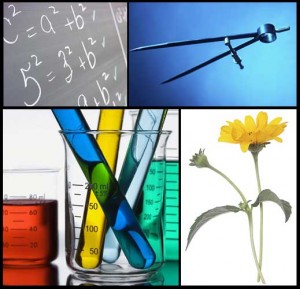
Dec 29, 2010
 Writing an op-ed feels a lot like driving through a tunnel. You travel in a direct line and focus on only one destination. This is because an op-ed is often 650 words or less, leaving little room for excursions beyond the main point.
Writing an op-ed feels a lot like driving through a tunnel. You travel in a direct line and focus on only one destination. This is because an op-ed is often 650 words or less, leaving little room for excursions beyond the main point.
The downside to having this singular focus is that you sometimes miss important parts of a story – not only in what you write down but also in how you think and gather information about a topic. This happened to me last Friday, when Newsday published a piece of mine called “U.S. should hail young scientists.”
The piece was motivated by a recent UNESCO report on the state of science around the world. The report found that in light of the recent economic downturn, traditional powerhouses have slowed their investments in education and R&D.
Emerging economies have taken advantage of the situation. They have increased their level of R&D investment and been able create new opportunities for technological advancement. This imbalanced activity is putting US prowess in peril. UNESCO found, for example, that China is overtaking the U.S. and Europe in terms of number of working scientists and science PhDs.
My article began with the statement: “Long Island is on the front lines of keeping America technologically competitive.” I talked about 3 recent winners of the national Siemens Competition in math, science and technology who were Long Island high school students and cited the history of science fair winners in some Long Island schools.
In the 2010 Intel science fair (which is the largest and most competitive pre-college science competition in the world), about 20% of the semi-finalists were Long Island students. In the article I also talked about two Garden City educators whose are being recognized for their work to teach chemistry to special education students.
The point of the article was meant to be a positive one. We often hear about the US losing the science and technological race to places like China and India. In our alarm, it is easy to overlook the fact that mentors, educators, parents and students themselves are putting out great effort and achieving a lot on the local level to create the young scientists of tomorrow. My article meant to say that these individuals are on the front lines of keeping the country technologically competitive, and that their efforts should be acknowledged and applauded.
That point stands. But it is not the whole story. In taking my 650 words or less direct line, I developed a bit of tunnel vision on the issue of science education in public schools. I have Ann Golob, who directs a project called the “Long Island Index” for theRauch Foundation, to thank for adding to my perspective.
Ann wrote to me to tell me that my op-ed in Newsday missed an important point about Long Island.
In her email (partially reprinted below with her permission), Ann eloquently and respectfully wrote:
“…In your search to laud three exceptional students you missed the reality of what goes on here in our school districts – our big picture. In just two counties we have 124 school districts – one with only 9 students, another that is only 1.1 square miles (all black-Latino student body surrounded by upper middle class neighborhoods with their own separate districts). Long Island’s school story is not about the few districts that have been able to produce terrific students.
Our school story is about how we have structured ourselves by race, by class, by ethnicity; it is the story of how opportunity is selective and if you happen to live in a school district that provides superb science education, you are one of the FEW lucky ones. I urge you to read the work that the Long Island Index produced in 2009 (on our website, www.longislandindex.org) on this topic. In one piece of research we conducted we found that 20% of the semi-finalists in Intel’s talent search in the past ten years came from LI schools – but half of them came from just 7 districts. Seven out of 124. That’s not a regional trend.”
There is a lot more to be discussed her, more than 650 words or less can contain. School achievement and inequality is a huge topic. Not every student on Long Island has the same stellar school experience. Far from it.
Indeed on the very same day my article ran, Newsday also printed a story about Roosevelt High School marking its 20th consecutive year on the state’s annual list of lowest achieving schools. Roosevelt is the only Long Island school on the list and the longest-standing occupant. The Newsday article cited the school principal, the school board president, parents, and other pertinent officials all expressing hope and talking about their efforts to improve things.
Those involved with Roosevelt are the front lines as well, engaged in a battle equally if not more important to that I originally wrote about.
